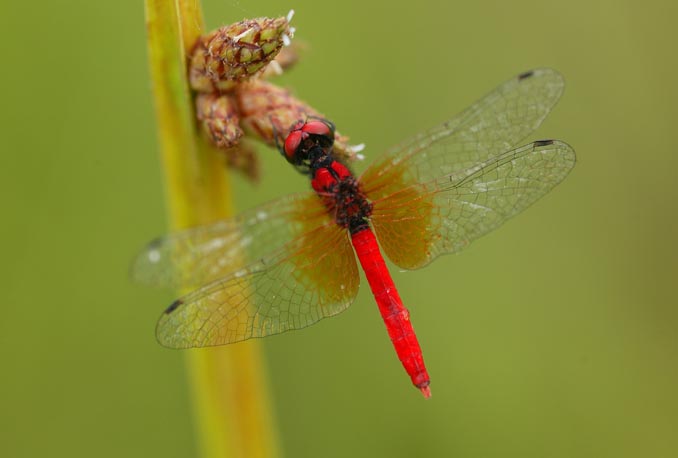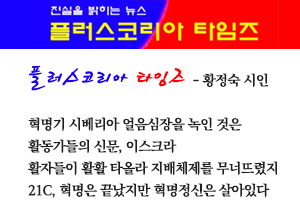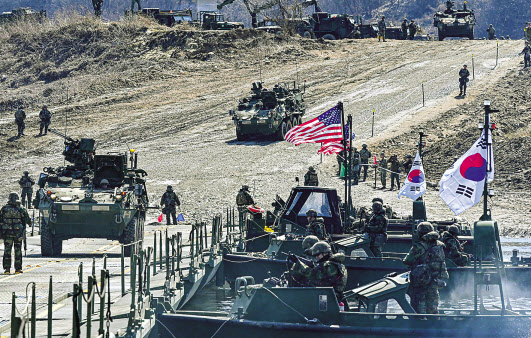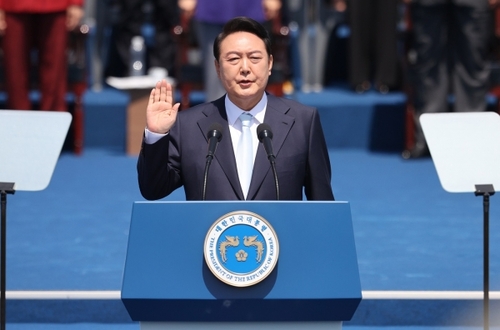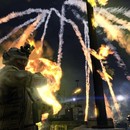|
[21세기 세계 주도의 핵심사상으로 일컬어지고 있는 홍익인간 사상에 관하여, 우리나라가 이제 지향해야 할 새로운 홍익인간 사상의 현대화 적용이론을 개발하여 제시하고자 한다. 본 내용은 임기추박사의 저서 “홍익인간 사상의 현대화 적용이론”(2022, 교보퍼플)을 60회로 나누어 연재한다. 편집자 주]
1) 홍익인간 사상의 유래와 의의
홍익인간의 유래
홍익인간’ 이념은 환국으로부터 배달, 조선, 고구려, 발해 등으로 전승되어 온 것으로 알려진다.곧, 성통・공완(성통・광명, 일신강충) 이후 재세이화하고 홍익인간을 추구해 왔다(고동영, 1986; 김호영, 2012; 장영주, 2013). 홍익인간 이념은 환국의 마지막 지위리 환인천왕으로부터 염지표(念之標)를 전승받고, 기원전 3898년에 신시 배달국을 개천한 1대 거발한 환웅 이후 역사적으로 전승되어 왔다. “하느님의 일신이 내려 주신 바에 따라 사람의 본성을 광명으로 통해 있으니 재세이화하고 홍익인간이 될지어다”(一神降衷性通光明 在世理化 弘益人間)라 했다. “고조선 도해 단군(道奚, 서기전 1891년 즉위, 재위 57년)은 환국의 마지막인 지위리 환인천왕의 16자 염지표(念之標) 글을 2,000여년 뒤에 염표문(念標文)으로 완성하였다.
그 뒤로 4,500년 후 고구려의 을지문덕(서기 610년)은 (중략) 염표를 구하여 날마다 재세이화하고 전수경도하여 홍익인간을 실현한다”(求念標 在世理化 專修境途 弘益人間)라고 기록되어 있다. 발해 3대 문 황제(서기 737년 즉위)는 “(중략) 천부경과 삼일신고를 가르치고, 환단고사의 옛 역사를 강론하고, (중략) 홍익인간의 교화는 만방에 미쳤다.”고 한다. 고려 공민왕때 수무하시중인 이암은 1363년 홍익인간 사상의 단군조선 역사를 전하는 단군세기를 엮었다. 근세조선 고종때 계연수는 1898년 단군세기와 태백일사를 묶어 편저한 후 1911년 환단고기를 합편하였다. 김구 주석은 ‘내가 원하는 우리나라’를 통해 “(중략) 진정한 세계의 평화가 실현되기를 원한다. 홍익인간이라는 우리 국조단군의 이상이 이것이라고 믿는다.”라고 하였다(김구, 2020). 오늘날 홍익인간은 대한민국의 교육법 제2조에 교육이념으로, 1949년 12월 31일 법률 제86호로 공포되었다. 이를 정리하자면, 홍익인간의 유래 및 전승 역사가 적어도 5,919여년에 다다랐다(서기전 3897년 → 서기전 1891년 → 서기 610년 → 서기 737년 → 1363년 → 1898년 → 1949년 → 2022(단기 4355)년 홍익인간 정신을 이어온 것임).
현 국사학계에서 인정하고 있는 홍익인간이라는 말이 나오는 현존하는 가장 오래된 문헌은 13세기에 편찬된 삼국유사와 제왕운기이다(정영훈, 2013). 우선 삼국유사는 고려 충열왕때 승려 일연(1206∼1289)이 편찬(1281)한 사서로서, 삼국사기가 제외한 단국건국 기사를 수록하여 한민족 역사(동국사/삼국사)의 출발부분을 보강해주고 있다. 삼국유사는 [위서]와 [고기] 등 2종의 문헌을 인용하여 단국 건국의 기사를 전하고 있는데, [고기]를 인용한 부분에서 환인이 아들인 환웅을 지상에 내려보낼 때 홍익인간을 고려한 것으로 기록되어 있다.
삼국유사 [고조선기]에 의하면, 아버지 환인이 아들의 뜻을 알고 삼위태백을 내려다보니 인간들을 널리 이롭게(弘益人間) 해 줄만했다고 한다. 이승휴(1224~1300)에 의해 저술(1287)된 제왕운기에서는 환인이 환웅에게 지상에 내려가서 홍익인간해 볼 것을 권유(지시)한 것으로 적음으로써, 홍익인간이 천제 환인이 인간세상과 관련하여 갖고 있던 생각이었다는 것을 좀더 명확히 해주고 있다. [본기]에 이르기를, 상제 환인에게 서자부 환웅에게 이르기를 삼위태백으로 내려가 홍익인간하겠는가라 하였다고 한다.
홍익인간의 자의 해석
정영훈(2013)은 ‘홍익인간’의 전체 의미를 일단 널리 (크게) 인간을 이롭게 한다 (돕는다) 정도로 해석하고 있다(정영훈(2013, 이하 아래 내용은 주로 인용하여 정리함). 그것은 국가나 권력 또는 통치행위가 기여할 최종가치는 인간을 행복하게 만들어주는 데 있다고 보는 사상이자, 개개인에게도 인간을 도우면서 사는 삶이 바람직한 삶이라 강조하는 사상이다. 홍익인간은 인간을 행복하게 해주는지의 여부를 정당성의 근거로 삼는 사고이며, 인간을 불행하게 만드는 모든 것에 반대하는 관점으로 접근한다.
홍익인간은 일단 [홍익+인간]으로 분해할 수 있다. ‘인간’은 홍익 행위 또는 작용의 목적이나 대상에 해당하며, 홍익부분은 다시 [홍 + 익]으로 구성되어 있다. [弘益人間(홍익인간)의 글자를 풀이]하자면 弘益人間 = 弘(홍) + 益(익) + 人間(인간). 弘(홍)은 ① ‘크다’(규모가 거대한 모습) → 성장・생산성・경쟁력・자유 → 자유주의 ② ‘넓다’(≑고르다. 고르게 펼쳐진 모습) → 분배・복지・평등 → 공동체주의. 益(익)은 돕는다. 더한다. 이롭게 한다. 人間(인간)은 人(사람) + 間(사이. 관계). ① 인간세상・공동체(Human society, Community). ② 사람(들)(Human being(s)) 등으로 풀이할 수 있다.
우선, ‘홍익’의 ‘홍(弘)’은 1차적으로는 ‘크다’로 새겨야 하고, 2차적으로 ‘넓다’로도 새길 수 있는 한자이다. 그런데 ‘크다’와 ‘넓다’는 의미상 큰 차이를 수반하는 용어이다. ‘크다’고 할 때는 부피・길이・넓이 등이 규모면에서 수적・양적으로 많은 것을 의미하지만, ‘넓다’고 할 때는 어떤 것이 (규모의 측면이 아닌) 고르거나 너그럽게 존재하며 펼쳐져 있는 모습 또는 양상을 가리키고 있는 것이다. 그런데, 규모가 크다는 말과 고르게 펼쳐져 있다는 말은 정치사회적으로 볼 때 서로 다른 지향의 원리와 결합한다. 곧 규모가 크다는 말은 성장이나 생산성을 우선하는 관점으로 연결되지만, 고르다는 말은 연대성이나 평등-분배의 중시 정책으로 전개된다.
물론성장이나 생산성은 자유주의의 사회원리와, 평등-분배는 공동체주의와 각각 친화력을 가지는 가치이다. 자유주의는 인간 본성을 자유에서 찾고 이기심과 이윤동기를 발전동력으로 상정하지만, 공동체주의는 인간을 공동체적 존재라 보고 인간이 갖고 있는 이타심과 선의지를 발전의 동력으로 상정한다. 홍익인간은 이 두 방향의 해석과 지향 모두를 긍정하고 그를 인간행복을 증진시키는 동인으로 삼을 수 있다. ‘홍’의 의미를 어떤 방향에서 해석할지 하는 것은 홍익인간의 사상적 지향을 유추함에 있어 매우 중요한 지점이다. 홍익인간 사상의 사회정책적 지향은 자유주의와 공동체주의의 어느 한 방향에 집착하지 않는 유연성을 보인다. 여건과 필요에 따라 어느 한 방향의 정책을 강조할 수도 있고 양자를 균형있게 취하여 최대의 인간복지나 행복을 기할 수도 있다(최봉영, 2007). 그러나 어느 방향의 대안을 선택하든 그 목표는 홍익인간에 두어져야 한다고 본다. 홍익인간은 권력자나 자본가가 아니라, 또 소수의 기득권층이나 엘리트가 아니라 전체 인간(공동체)을 행복하게 하는지를 판단과 평가의 기준으로 삼는다. 홍익인간 사상이 가지는 성격과 지향은 통합과 성장(발전)을 동시에 추구해야 하는 시대과제를 이끌 수 있는 새로운 사회・경제이론을 정립함에 이론적 토대로 삼을 수도 있을 것이다.
최봉영(2007)은 홍익인간의 ‘익(益)’은 ‘돕는다’와 ‘더한다’의 의미를 가지고 있고, ‘이롭게 한다’는 의미로도 자주 새겨지는 것으로 보았다. 통상적인 해석인 ‘이롭게 한다’의 의미보다는 ‘돕는다’는 의미가 우선적이라 할 수도 있는데, ‘돕는다’의 본래적 의미는 ‘되게 한다’거나 ‘답게 한다’는 뜻으로서, 어떤 것이 본래의 속성을 다할 수 있도록 도와주는 것을 말한다. 조소앙은 1920년대 이후 좌우합작 지향의 민족운동을 전개한 지도자의 한사람으로 삼균주의를 통일민족국가 건설을 위한 기조이론으로 제안하였다. 조소앙의 삼균주의에서 균등을 국가통합과 국제평화를 위한 가장 중요한 가치로 강조하고, 홍익인간을 균등을 중시한 민족내적 전통의 사례로 들었다. 삼균주의는 안으로 정치・경제・교육 등 3방면의 균등을, 그리고 밖으로는 국가・민족・인류 등 3차원의 균등을 주장하였다(정영훈, 2007). 권성아 외(1999)는 홍익인간의 인간을 개인보다는 사람과 사람이 더불어 사는 세상으로의 인간세계를 뜻하는 것으로 해석하고 있다.
학자들 중에는 현실주의적 ‘이익’의 개념이 연상되는 ‘이롭게 한다’로의 해석은 홍익인간의 본래적 지향을 어지럽힌다고 보고, ‘돕는다’라는 용어를 사용하여 홍익인간을 번역해야 한다고 주장하는 이들도 있다(최봉영, 2007). 그러나 ‘인간을 돕는다’로 하여도 ‘인간을 이롭게 한다’라는 기존 해석과 의미에서 크게 어긋나는 것은 아닌 것 같다. 굳이 말하면, ‘이롭게 한다’와 ‘돕는다’ 사이에 존재하는 의미차이보다는 ‘크다’와 ‘넓다’ 사이의 의미차이가 더 크고 중요하다고 말할 수 있다.
홍익인간의 인간 정체성
이하 아래 내용은 주로 정영훈(2013) 정리내용을 인용하여 정리하였다. 그러면 홍익인간의 ‘인간’은 누구인지, ‘홍익’ 행위의 대상이면서 목적인 ‘인간’이 누구를 가리키는가에 대한 그동안의 일반적인 해석은, 오늘날 의미의 ‘사람’으로 해석해서는 되지 않고, ‘인간세상’이나 인간공동체‘ 정도로 해석해야 한다는 것이었다(권성아 외, 1999). 그러나 정영훈(2013)은 1차적으로 물론 사람들이 모여 사는 인간세상 또는 공동체(Human society, Community)를 가리킨다고 봐야 하지만, 신이나 동물과 구분되는 존재로의 사람(Human being, Human beings)으로 해석될 수도 있다고 보았다. ‘인간(人間)’은 사람 ‘인(人)’과, 사이 또는 관계를 의미하는 ‘간(間)’을 결합한 말이므로, 일단 인간사회-인간세상이나 공동체로 해석하는 것이 순리적이다. 그러나 사회나 공동체로만 보아서는 안되며, 현대어로의 사람이나 인간(존재)를 가리키는 말이기도 했다고 봐야하는 것으로 해석할 수 있다.
인간을 사람(들)로 해석할 수 있는 이유는 다음과 같다. 우선 단군사화의 문맥상 그렇게 해석될 수 있다는 점이다. 단군사화에서의 인간은 ‘범주인간 360여사(凡主人間三白六十餘事)’와 ‘주곡・주명・주병・주선악・주형’ 등 5사(五事)의 수혜자이자 배려대상이다. 말하자면, 먹고사는 문제로 고민하고(주곡) 질병으로 인하여 고통받으며(주병), 선악의 사이에서 고뇌하다가(주선악) 죄를 짓고 형벌을 받기도 하는 존재이자(주형), 한정된 시공간 속에서 살다 가는 운명을 타고난 존재(주명)였던 것이다. 그리고 그런 존재는 바로 ‘사람(들)’이라 할 수 있다. 또 사화 속에는 ‘인(人)’이 포함된 용례가 ‘인간’ 외에도 ‘인세(人世)’와 ‘(인)人・(인형)人形・인신(人身)’ 등이 더 있는데, 만약 인간세상만을 지칭하려 하였다면 굳이 인간이라 하지 않고 ‘인세’라 하였을 것이라는 점도 고려될 필요가 있다.
그리고 그 ‘인간’은 생로병사의 고통을 안고 현생을 갈아가는 존재로의 ‘사람들’이다. 학자들 중에는 이 ‘인간’을 사람과 자연을 망라한 개념인 ‘누리’로 해석하는 이도 있다(김인회, 1999). 사화내용을 두고 볼 때 홍익인간 관념은 우선 인간-사람과 사회-공동체의 행복을 우선 고려하고 있다는 점을 유념해야 한다. 가령 환웅이 굳이 ‘탐구인세’라 하여 천하와 지상에 뜻을 둔 것은 거기에 사람-인간이 있기 때문이었다. 신시에서 처결한 주곡・주명・주병・주선악・주형 등의 직무들 역시 인간사회의 복지 및 질서에 관계되는 일들이었던 것이다.
단군사화 속의 인간은 (단군이 웅녀(웅족 여성)와 환웅의 사이에서 태어난 자식으로 상정되어 있는 데서 보듯이) 신적인 속성과 민족(웅족, 원문은 동물)적 속성 사이에 있는 존재인 것이다. 그리고 (마치 웅족이 수양의 과정을 거쳐 인간(웅녀(웅족 여성))이 되어 단군이라는 위인을 낳고, 단군이 산신으로 은퇴하는 것으로 나오는 데서 보듯이) 개인의 결단과 수양에 따라 높은 인격적 경지로 발전할 수도 있는 존재이다(이계학, 1986). 좀더 상상력을 발휘한다면, 이윤동기나 이기심만 가진 존재가 아니라 선악을 판별하고 홍익인간의 가치를 위해 헌신할 수도 있는 존재라고도 말할 수 있으며, 돈과 권력을 목표로 이기적으로 투쟁하는 존재에 그치지 않고, 이타심과 선의지를 갖고 인간애를 실천할 수 있는 존재로도 해석할 수도 있을 것이다.
한편, 정치・사회적으로 볼 때의 인간은 왕이나 특권계급이 아닌 피치자-백성-민중-대중을 특히 가리킨다고 할 수 있다. 단군사화 속의 인간은 환웅이라는 통치자와 풍백을 비롯해서 우사・운사・주곡・주명 등 정부 관리계급 또는 국가기능의 보살핌 또는 다스림을 받는 존재들이며, 탐구인세와 재세이화라는 권력 작용의 대상이기도 한 것이다. 홍익인간 사상은 특히 피치자-백성-민중으로 향하는 관계를 맺고 있는 것이다.
* 필자/임기추
홍익경영전략원 경영학박사・원장/유튜브 홍익나라(https://www.youtube.com/channel/UCp77kpD3e2PDSg6OHI8LJTw) 채널운영자(tranlim@hanmail.net).
*아래 영문은 위 기사를 '구글 번역'으로 번역한 기사의 [전문]입니다. 영문 번역에 오류가 포함되어 있을 수 있음을 전제로 합니다. *The English below is the [full text] of the article translated by 'Google Translate'. It is assumed that the English translation may contain errors.
[Regarding Hongik Ingan Ideology, which is said to be the core ideology leading the world in the 21st century, I would like to develop and present a theory of modernization application of the new Hongik Ingan ideology that Korea should now pursue. This article is a series of 60 episodes of Dr. Lim Ki-chu’s book “Modernization Theory of Hongik Ingan Ideology” (2022, Kyobo Purple). Editor's Note]
[Modernization Theory of Hongik Ingan Ideology -3] The Origin and Significance of Hongik Ingan Ideology
2. Origin and Value of Hongik Ingan Ideology
1) Origin and Significance of Hongik Ingan Ideology
Origin of Hongik Ingan
The idea of ‘Hongik Ingan’ is known to have been handed down from Hwanguk to Baedal, Joseon, Goguryeo, and Balhae. Soon, after Seongtong Gongwan (Seongtong Gwangmyeong, Ilsin Gangchung), Jaeseihwa and Hongik Ingan have been pursued (Ko Dong-young, 1986; Kim Ho-young, 2012; Jang Young-ju, 2013). The Hongik Ingan ideology has been handed down historically since Hwanung, the first great leader who opened Sinsi Baedalguk in 3898 B.C. He said, “According to what God has bestowed upon us, human nature is radiated through human nature, so let’s become Jaeseihwa and Hongik Ingan.” “Gojoseon Dohae Dangun (those who came to the throne in 1891 B.C.E., reigned 57 years) converted the 16-character Yeomjipyo (念之標) writing of Hwanincheonwang, Jiwiri, the last of the Hwanguk, into Yeompyomun (念標文) completed after 2,000 years later.
After that, 4,500 years later, Eulji Mundeok (AD 610) of Goguryeo (omitted) obtains Yeompyo, makes Jaeseihwa every day, and practices Hongik Ingan.” is recorded. The 3rd emperor of Balhae (who took the Mun in 737 AD) said, “(omitted) Teach Cheonbugyeong and Samilsingo, discuss the old history of Hwandangosa, (omitted) Hongik Ingan’s edification spread all over the world.” do. During the reign of King Gongmin of Goryeo, Lee Am compiled Dangun Segi, which conveys the history of Dangun Joseon based on Hongik Ingan's thought in 1363. During the reign of King Gojong of the early modern Joseon Dynasty, Gye Yeonsu compiled Dangunsegi and Taebaekilsa in 1898, and then combined Hwandangogi in 1911. Through “The Country I Want,” President Kim Koo said, “(omitted) I want true world peace to come true. I believe that this is the ideal of our national team called Hongik Ingan” (Kim Gu, 2020). Today, Hongik Ingan was promulgated as an educational ideology in Article 2 of the Republic of Korea's Education Act, and on December 31, 1949 as Act No. 86. To summarize, the origin and transmission history of Hongik Ingan has reached at least 5,919 years (3897 BC → 1891 BC → 610 AD → 737 AD → 1363 → 1898 → 1949 → 2022 (Short term 4355) following Hongik Ingan spirit).
The oldest extant documents in which the word “Hongik Ingan” is recognized by the current academia of national history are Memorabilia of the Samguk Yusa and Jewangungi compiled in the 13th century (Jeong Yeong-hun, 2013). First of all, Samguk Yusa is a history book compiled (1281) by Il-yeon (1206-1289) during the reign of King Chungyeol of Goryeo. there is. Memorabilia of the Samguk Yusa quotes two types of documents, [Wiseo] and [Gogi], to convey the story of the founding of Dankook was recorded.
According to Samgukyusa [Joseon Chronicle], the father Hwanin knew his son's will and looked down at Taebaek, the Three Kingdoms, and it was said that it was good enough to benefit humans widely (弘益人間). In Jewangungi, written (1287) by Lee Seung-hyu (1224-1300), it is written that Hwanin invited (instructed) Hwanung to go down to the ground and try Hongik Ingan. It makes it more clear that the Cheonje Hwanin had thoughts in relation to the human world. According to [Bongi], Sangje Hwanin told Seojabu Hwanung, "Would you like to go down to the Samwi Taebaek and become a Hongik Ingan?"
Self-interpretation of Hongik Ingan
Young-Hoon Jeong (2013) interprets the entire meaning of 'Hongik Ingan' to the extent of benefiting (helping) humans (largely) (Jeong Young-Hoon (2013, hereinafter, the contents below are mainly cited and summarized). It is the national It is an idea that believes that the final value of power or governance is to make people happy, and it is an idea that emphasizes that a life that helps people is a desirable life for each individual. It is an accident based on legitimacy, and approaches from the perspective of opposing everything that makes humans unhappy.
Hongik Ingan can be broken down into [Hongik + Ingan]. ‘Ingan’ corresponds to the purpose or object of Hongik action or action, and the Hongik part is again composed of [Hong + Ik]. [Resolving the letters of 弘益人間(Hongik Ingan)] 弘益人間 = 弘(hong) + 益(ik) + 人間(ingan). 弘 (Hong) is ① ‘big’ (large scale) → growth·productivity·competitiveness·freedom → liberalism ② ‘wide’ (≑even, evenly spread) → distribution·welfare·equality → communitarianism. 益 (Ik) helps. add up benefit 人間 (Ingan) is 人 (person) + 間 (between. relationship). ① Human society, community. ② It can be interpreted as human being(s).
First of all, ‘Hong(弘)’ in ‘Hongik’ is a Chinese character that should be engraved as ‘large’ first and can also be engraved as ‘wide’ secondarily. However, 'big' and 'wide' are terms that carry a big difference in meaning. When we say 'large', it means a lot in terms of volume, length, area, etc. in terms of number and quantity, but when we say 'wide', it means that something is evenly or generously present (not in terms of scale), spread out, or It is pointing to the shape. By the way, the words that the scale is large and the words that are spread out evenly are combined with the principles of different orientations from a political and social point of view. Soon, the word large scale leads to a perspective that prioritizes growth or productivity, but the word select develops into a policy that emphasizes solidarity or equality and distribution.
Of course, growth and productivity are values that have affinity with the social principles of liberalism, and equality and distribution with communitarianism. Liberalism finds human nature in freedom and assumes selfishness and profit motive as the driving force for development, but communitarianism views humans as communal beings and assumes altruism and good will possessed by humans as the driving force for development. Hongik Ingan can affirm both interpretations and orientations in these two directions and make them a driving force to promote human happiness. How to interpret the meaning of 'Hong' is a very important point in inferring the ideological orientation of Hongik Ingan. The social policy orientation of Hongik Ingan ideology shows flexibility that does not cling to either direction of liberalism or communitarianism. Depending on circumstances and needs, policies in either direction can be emphasized, or both can be balanced to achieve maximum human welfare or happiness (Choi Bong-young, 2007). However, regardless of which alternative direction is chosen, the goal should be placed on Hongik Ingan. Hongik Ingan is not a powerful person or a capitalist, nor a few vested interests or elites, but the standard of judgment and evaluation is whether it makes the entire human (community) happy. The character and orientation of Hongik Ingan's thought can be used as a theoretical basis for establishing a new social and economic theory that can lead to the era's task of pursuing integration and growth (development) at the same time.
Choi Bong-young (2007) saw that Hongik Ingan's 'Ik' has the meaning of 'helping' and 'adding', and is often engraved with the meaning of 'benefiting'. It can be said that the meaning of 'to help' takes precedence over the meaning of 'to benefit', which is a common interpretation. It means helping you do it. Jo So-ang was one of the leaders who developed a national movement oriented toward left-right collaboration after the 1920s, and proposed the Three Ginsengism as the keynote theory for the construction of a unified nation-state. In Cho So-ang's Samgeunism, equality was emphasized as the most important value for national unity and international peace, and Hongik Ingan was cited as an example of an ethnic tradition that values equality. The three-dimensional principle insisted on equality in three dimensions, such as politics, economy, and education, internally, and equality in three dimensions, such as the nation, nation, and humankind, externally (Jeong Young-hun, 2007). Seongah Kwon et al. (1999) interpret Hongik Ingan's human to mean the human world as a world where people live together rather than individuals.
Some commentators believe that the interpretation of 'to benefit', which is reminiscent of the concept of 'profit' in realism, disturbs Hongik Ingan's original orientation, and uses the term 'to help' to promote Hongik Ingan. There are also those who claim that should be translated (Choi Bong-young, 2007). However, it does not seem to deviate greatly from the existing interpretation and meaning of 'helping humans' even if it is 'helping humans'. To put it bluntly, it can be said that the semantic difference between 'big' and 'broad' is larger and more important than the difference in meaning between 'to benefit' and 'to help'.
Human Identity of Hongik Ingan
The contents below are mainly summarized by quoting Jung Young-hoon (2013). Then, the general interpretation of who Hongik Ingan's 'human' is and who the 'human' refers to as the object and purpose of the 'hongik' act should not be interpreted as 'human' in today's sense, It was said that it should be interpreted as 'the human world' or 'human community' (Kwon Seong-ah et al., 1999). However, Jung Young-hoon (2013) should be seen as primarily referring to the human world or community where people live together, but it can also be interpreted as human beings (Human beings) as beings distinct from gods and animals. saw that there was Since ‘human’ is a combination of ‘human’ and ‘inter,’ which means between or relationships, it is reasonable to interpret it as human society-human world or community. However, it should not be seen only as a society or community, and it can be interpreted as a word that refers to a person or human being (existence) in modern language.
The reason why Ingan(human beings) can be interpreted as person(s) is as follows. First of all, it can be interpreted that way in the context of Dangunsahwa. In Dangunsahwa, human beings are beneficiaries and objects of consideration of the five Sa (modern government ministries), including ‘360 human categories (modern laws, etc.)’ and ‘Jugok·Jumyeong·Jubyeong·Juseon-eak·Juhyeong’. In other words, beings who agonize over food and livelihood (Jugok), suffer from disease (Jubyeong), agonize between good and evil (Juseon-eak), commit sins and receive punishment (Juhyeong), and live in a limited time and space, was a natural being (Jumyeong). And such beings can be called ‘people’. In addition, there are other usages that include 'human' in social history, such as 'human world' and 'person, person shape, human body' besides 'human'. It is also necessary to consider that if it was intended to refer to it, it would have been called 'Inse' instead of 'Ingang(human)'.
And those 'Ingang' are the 'people' who are going through the present life with the pain of birth, old age, sickness and death. Some scholars interpret this ‘Ingang’ as ‘nuri’, a concept that encompasses people and nature (Kim In-hoe, 1999). It should be noted that the concept of Hongik Ingan prioritizes the happiness of human-human and social-community when looking at the contents of social history. For example, the reason Hwanung insisted on the world and the earth by calling it 'Tamguinse' was because there were human beings there. The duties such as gok, myeong, sickness, good and evil, and punishment were also related to the welfare and order of human society.
Ingang in the Dangun story are between divine attributes and national attributes (as seen in the fact that Dangun is assumed to be a child born to Ungnyeo (a woman from the Ung tribe) and Hwanung. And (as seen in the case of the Ung tribe becoming a human (Ungnyeo (women of the Ung tribe)) through the process of cultivation, giving birth to a great man named Dangun, and retiring as a mountain god. It is a being that can do it (Kye-Hak Lee, 1986). If you look closely, you can say that you are not only a profit motive or selfish person, but also a person who can distinguish between good and evil and devote yourself to the value of Hongik Ingan. It can also be interpreted as beings capable of practicing humanity with altruism and good will.
On the other hand, from a political and social point of view, Ingang can be said to specifically refer to the subjects-people-people-mass, not kings or privileged classes. Ingang in Dangunsahwa are those who are cared for or governed to benefit from the administrative class or state function, such as the ruler Hwanung and Poongbaek, as well as Usa, Unsa, Jugok, and Jumyeong. It is also the object of power action. The idea of Hongik Ingan is that the ruler has a relationship with the subject-the people.
*Writer/Lim Ki-chu
Doctor of Business Administration, Hongik Institute for Management Strategy & Director/YouTube Hongik Nara Channel Operator (tranlim@hanmail.net).
<저작권자 ⓒ pluskorea 무단전재 및 재배포 금지>
홍익경영전략원 원장・경영학박사, 홍익사상학자 / 유튜브 홍익나라 채널운영자 / 단군정신선양회 학술위원 / 전 에너지경제연구원 연구위원 / 전 행정안전부 시도합동평가단 평가위원 / 전 국무총리 기후변화협약대책위원회 평가위원 / 전 대통령자문 지속가능발전위원회 전문위원 / 전 대통령직속 민주평화통일자문회의 자문위원 / 홍익인간 사상관련 50여권의 저서 및 11편의 학술논문 발표

hongikingan, hongik ingan, jaeseihwa, 홍익인간, 재세이화, 관련기사목록
|
연재
많이 본 기사
|
||||||||||||||||||||||||||



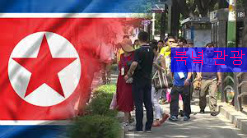
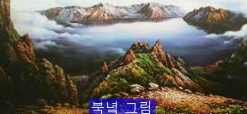
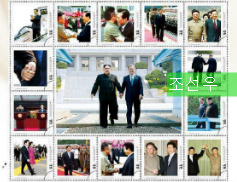
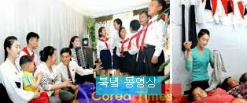
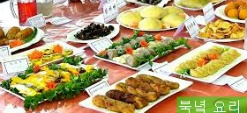
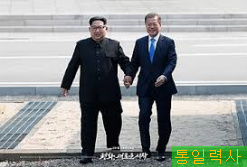
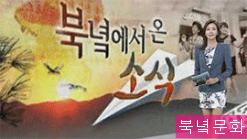






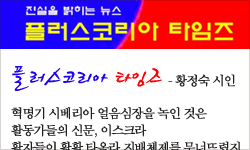


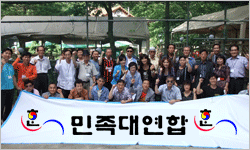







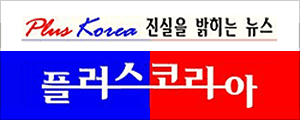
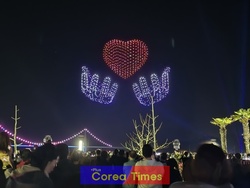
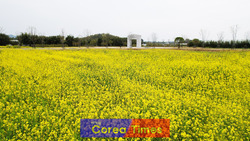
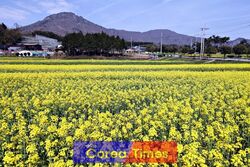
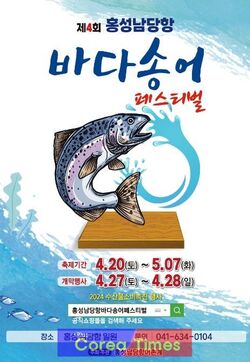
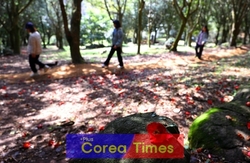
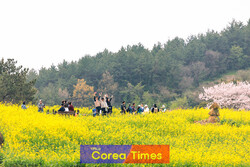
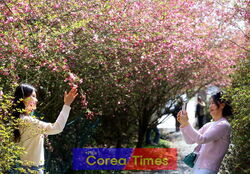

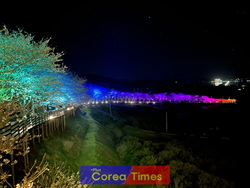
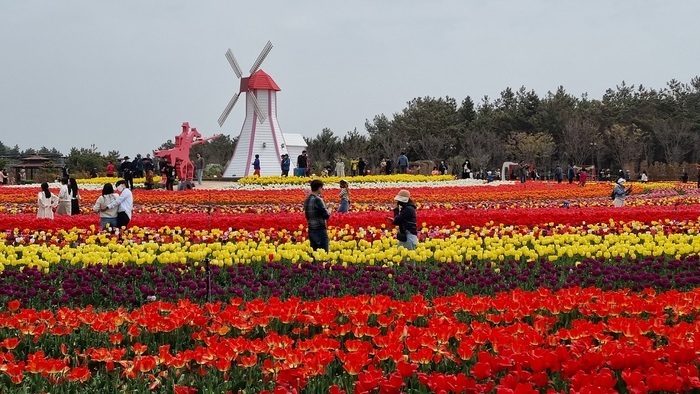
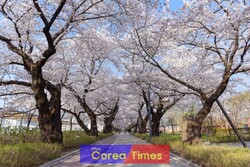
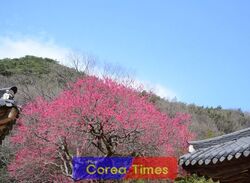
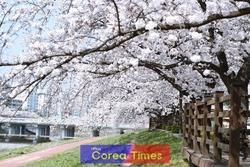
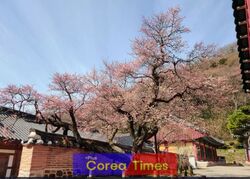
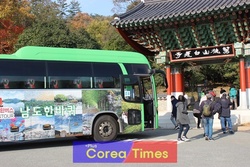
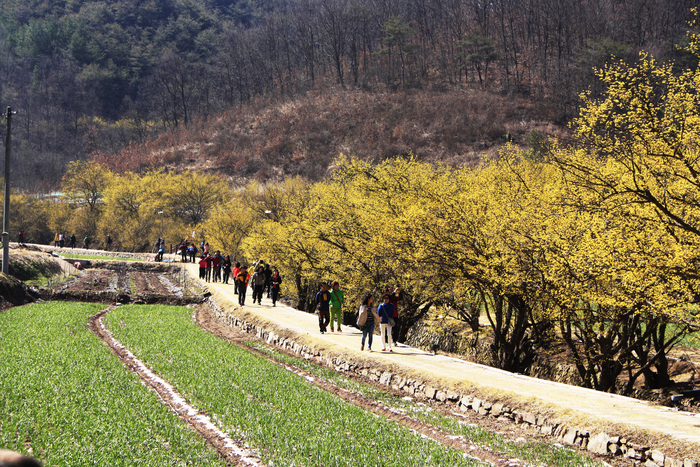
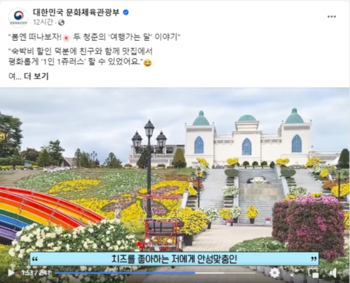
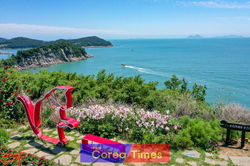
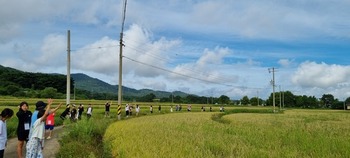
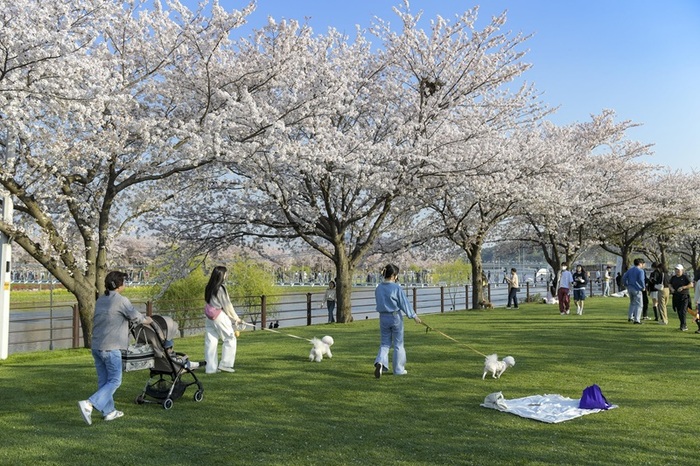
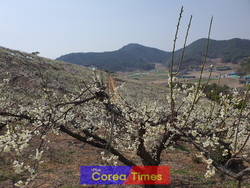
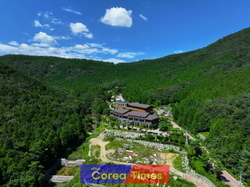

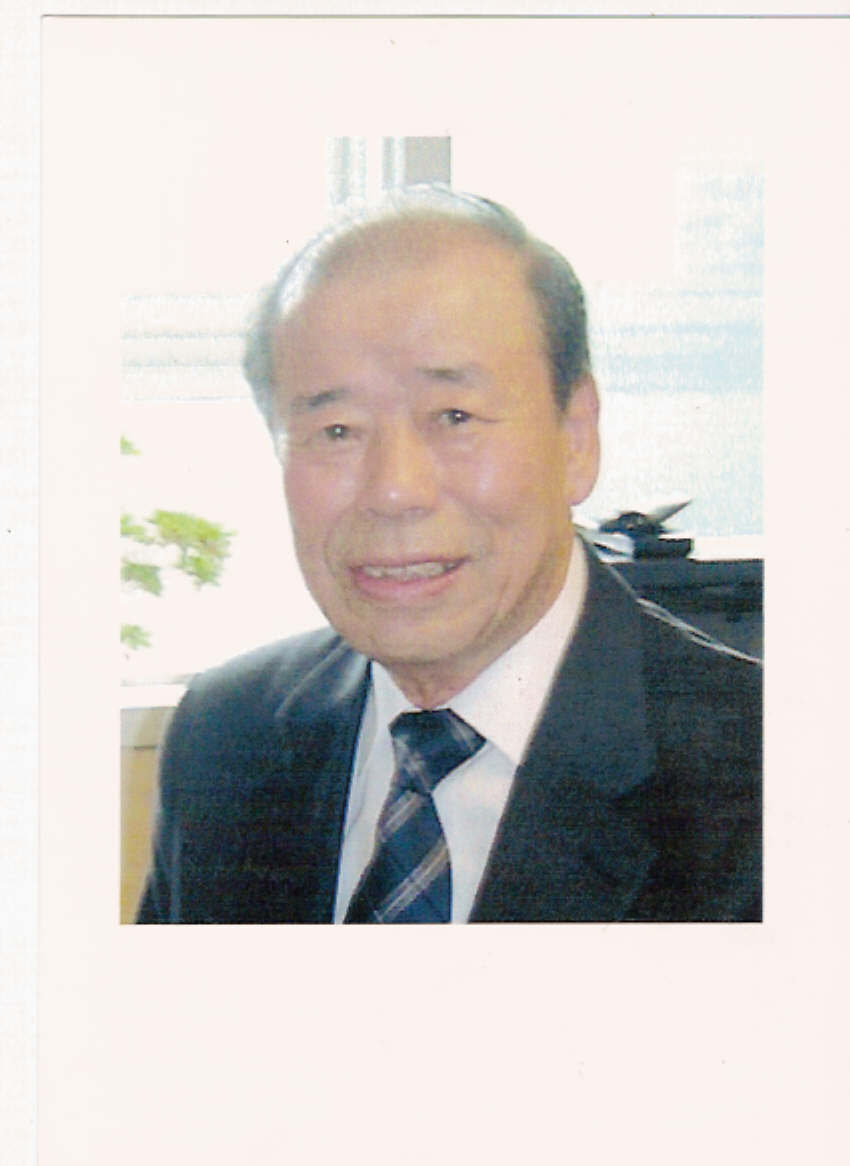
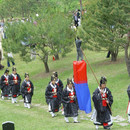

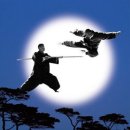
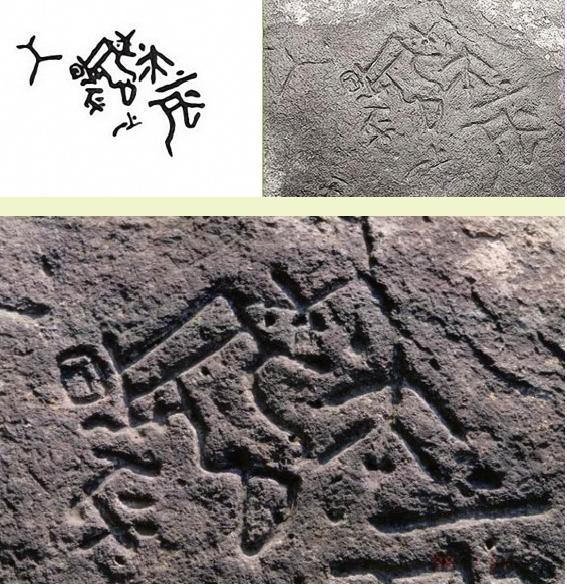
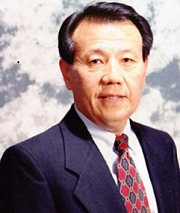
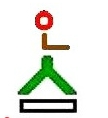
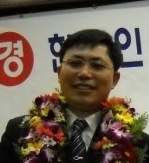
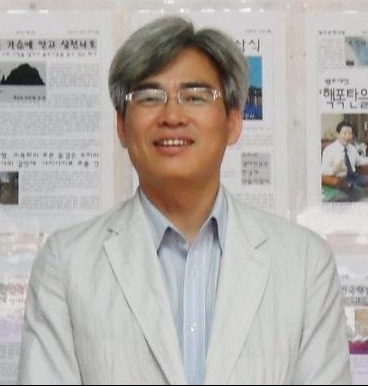
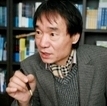
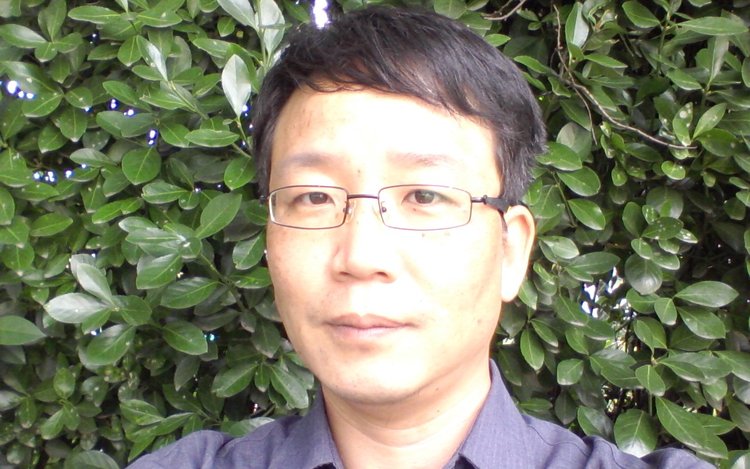
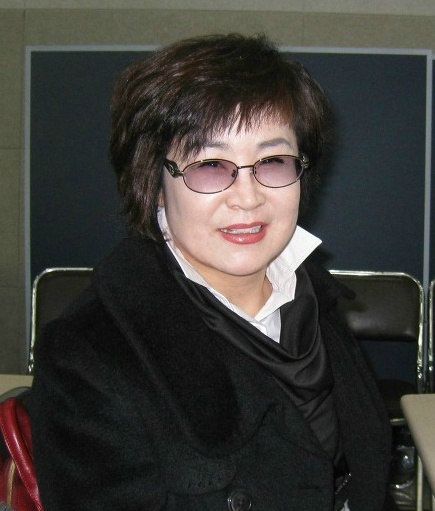
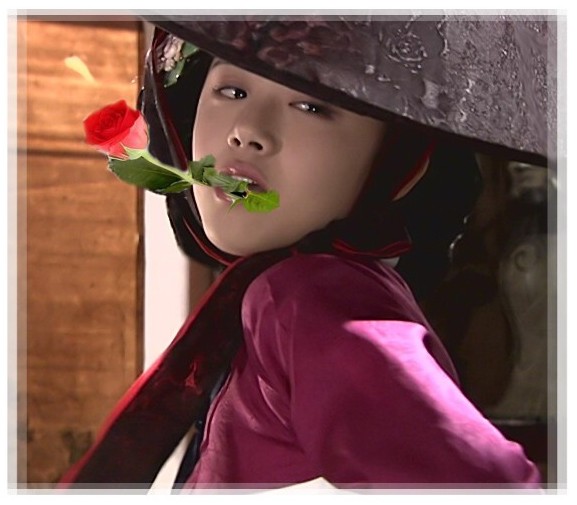
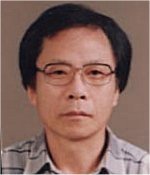
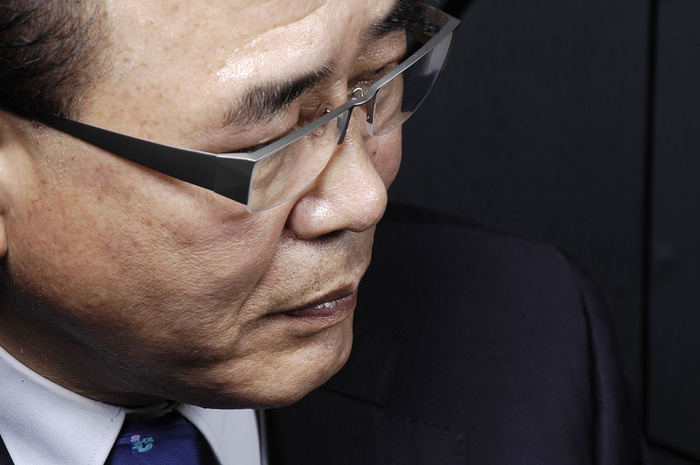
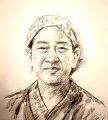
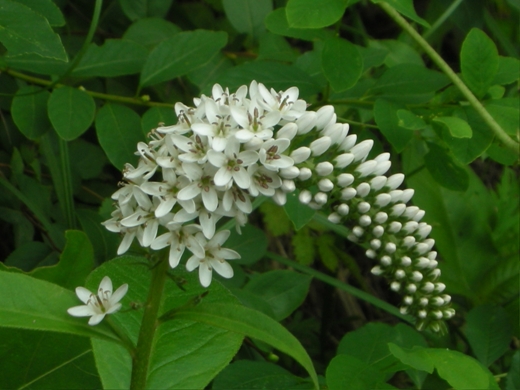
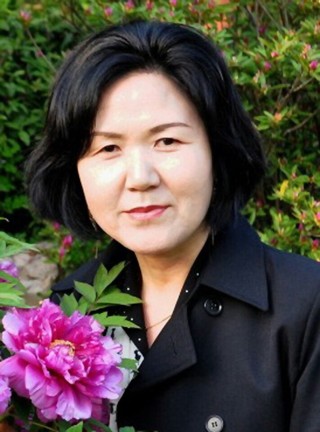
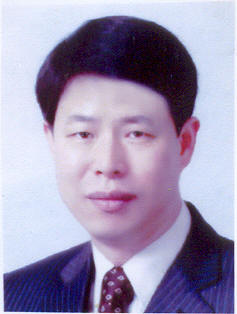

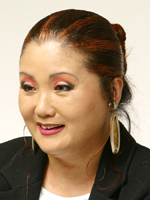
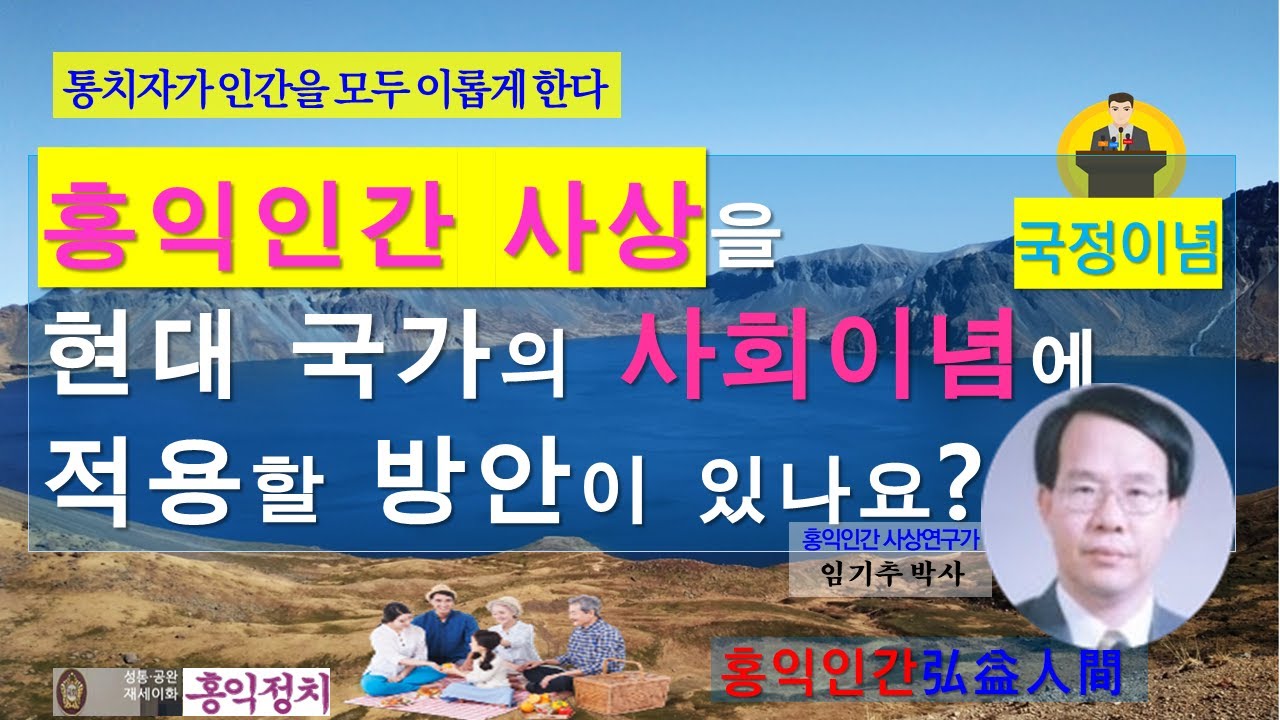
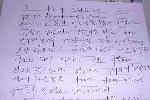
 '잊혀진 계절'누굴위해 존재하는가
'잊혀진 계절'누굴위해 존재하는가